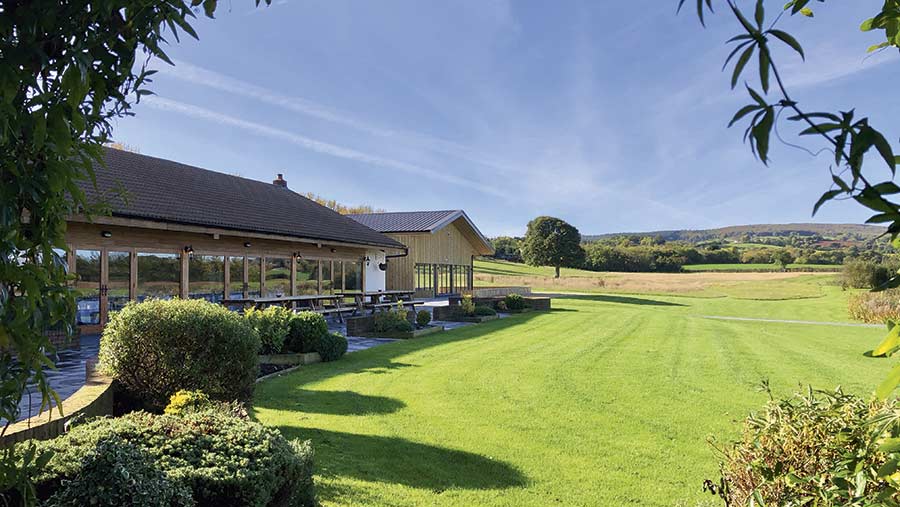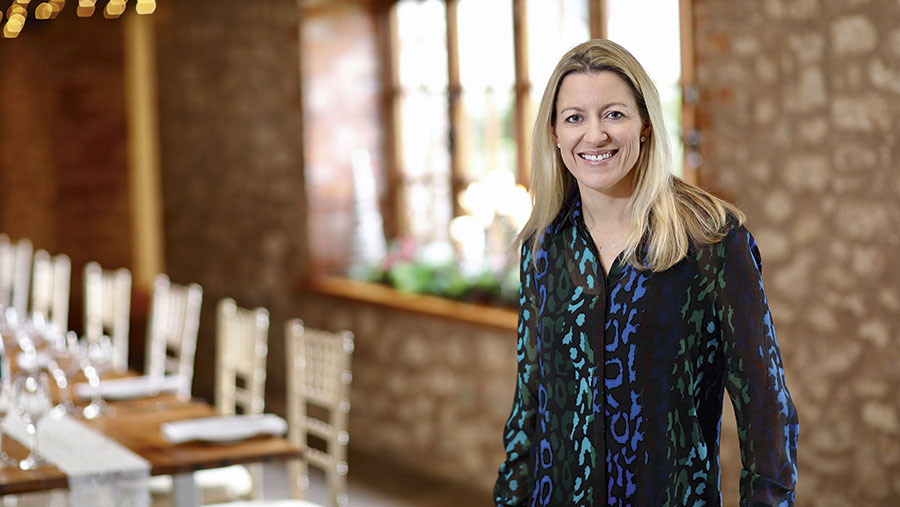Diversified farmers’ guide to using social media
 The Quantock Lakes wedding venue
The Quantock Lakes wedding venue Diversified businesses looking to bring in new customers need to create a social media strategy that is narrowly focused on their target audience to avoid wasting time and money.
That’s the message from Alison Teare, of rural social media advice firm Social Jungle, who says while many business owners are now aware of the need have an online presence, doing the wrong thing can turn people away.
See also: So you want to… offer fishing?
Before launching into myriad posts on Facebook, Twitter or Instagram, she advises taking the following steps to make the most of your time spent online:
1. Identify the customers your business most wants to attract
Thinking about customers’ age, location and interests will help you home in on which social media platform is best to reach them on, Mrs Teare explained.
“Facebook is still king but its likeability is waning. It is a directory rather than where people like to be,” she said.
The average age of Facebook users is rising and the number of active users is falling, so if a business is specifically looking to attract young people, it may want to consider alternatives such as Instagram, she suggested.
“You have to choose your platform carefully. There is no point being somewhere where you like being if that is not where your audience is,” she said.
For businesses looking to attract corporate clients, such as those offering meeting rooms or commercial lets, LinkedIn would be a good starting point, while Pinterest should be investigated by those looking to market goods.
“Do not try and be everywhere to start with. Do one or two things well,” she said.
“It is quality over quantity. You can get some really good referrals from smaller audiences.”
2. Tailor your content to your audience – and make it personal
Busy farmers who do not naturally feel at home online may be tempted to sub-contract the management of social media, but this should be avoided if possible, Mrs Teare said.
“You have to know how you are going to attract your customers before you can tell someone else how to do it, or it will be generic,” she said.
She advised people looking for inspiration to ask themselves what would be their ideal customer’s magazine choice, then go and buy that magazine and examine the content.
A productive route for many family-run businesses will be to talk about themselves, as customers respond more positively to businesses that do more than simply advertise their products.
This can begin long before a diversification is completed, as if you bring people along for the journey with you, they will be a more engaged audience by the time you do have something to sell, she said.
3. Be consistent – and respond to people
Building up the identity you want your customers to see can take time, and one misstep can have serious consequences.
Mrs Teare recalls a farming business she worked with that had converted a barn into accommodation and wanted to target people on walking holidays – the main tourism market in their area. They ran into difficulties when they shared testimonials from a hen party on social media.
Removing that content saw an uptick in interest and bookings from the target market as they were no longer being put off by it being associated with a very different type of getaway.
“I think you have to be realistic to get traction. You have to be there every single day,” she said.
As well as public replies to posts, the more easily overlooked private messages should also be closely monitored and quickly responded to as these will frequently be from customers with genuine enquiries.
4. Bring them back to resources you own
Social media is a tool to introduce your business to people, but it should be treated as a means to an end, rather than the whole sales tool.
Social media should drive potential customers to the business’s own website, says Mrs Teare, as this is an asset which you own and control, while social media is someone else’s space which is vulnerable to rapid change or even disappearing.
Collecting email addresses and distributing a marketing email is another controllable way to maintain contact with people.
Social media scrutinised |
||
|
Platform |
Positives |
Negatives |
|
|
Best platform for targeting advertising at people in a particular locality. Large audience of older people will be attractive to many businesses. |
Overall audience is dwindling as young people desert it for newer alternatives. Advertising will cost £300/month to have a significant impact, according to one estimate. |
|
|
Easy to reach a particular audience through the use of hashtags. Cheaper advertising than Facebook. |
Audience is skewed towards men and people in professional jobs. Debate can often be bad-tempered. |
|
|
Popular among young people and women. |
Picture-led, so can be difficult to transmit much information. |
|
Snapchat |
Popular with young people. |
Posts disappear rapidly so it can be hard to direct people to your website. |
|
YouTube |
Archives content in an accessible way for much longer. |
Can be difficult to gain momentum with followers. |
|
TikTok |
Latest social media sensation – growing rapidly. |
Audience still relatively small so far. |
Case Study: Quantock Lakes wedding venue
The backdrop of Somerset’s beautiful Quantock Hills may be the star asset for marketing Naomi Hansford’s on-farm wedding venue, but she and her team are continually innovating to reach couples looking for the perfect venue for their big day.
The 11-year-old diversification, which slots into a wider family-run farming business, has a good foothold in the area, with up to three weddings a week in the summer.
Ms Hansford said that level of success had been achieved only with good marketing and continual investment in additional infrastructure.

Naomi Hansford says many bookings are already following the venue on social media
With plenty of space to work with, the business chose to target couples wanting a large evening party in a relaxed atmosphere – rather than those looking to maximise the pomp and ceremony.
Starting out as a marquee next to a lake – dug out from some persistently wet spots in a field – the venue now boasts converted barns with accommodation for up to 60, seating for up to 250 for the ceremony and dining by day, and up to 500 in the evening.
“Understanding our audience has been a massive driver as to what we do next,” said Ms Hansford, explaining that they targeted investment in accommodation to increase their appeal to people coming from further away – broadening their target market.
Reaching more customers
Social media is crucial to reaching potential new clients, with the business most focused on Facebook and Instagram.
The younger audience who are more likely to be the ones getting married are on Instagram but have left Facebook, while key decision makers (such as parents) are still on there, meaning the business needs to be on both.
“We want to get across that we offer a very personalised experience and we don’t want to do back-to-back weddings,” she said – a crucial factor for many couples who like to arrive the day before the ceremony and have a leisurely departure the day after.
“It is very, very unusual for a couple not to have followed us on social media before they come for a booking,” she said.
The business works closely with wedding photographers to post a steady stream of attractive pictures from previous events across both platforms.
“Photographers also attract new bookings through their social media so it is a relationship that works really well,” Ms Hansford said.
The main benefits of spending money to advertise online is that it can be highly targeted – to a particular demographic in a specific area, and feedback is rapid on which campaigns have worked and which haven’t, allowing the strategy to be continually tweaked.
Social media tips
• Make an effort to understand your audience and where they are. Which social media platform is your target market most likely to be using?
• Be really open-minded if you are spending money to understand what works well. Continually test – and don’t be afraid to pull things which are not working.
• Humanise your business – make it about the people involved and what you are doing on a day-to-day basis.
• Think hard about the assets you can use to help your cause – if you are in a beautiful area make the most of your surroundings. If you have family members who are more online-savvy, make use of their knowledge.
• Collaborate with social media influencers or other businesses which you have a common cause with.
• Don’t get into arguments with ranters.
• Don’t be inconsistent or infrequent – it is better not to post at all than do it rarely, which is why it is better to limit activity to a small number of platforms.
